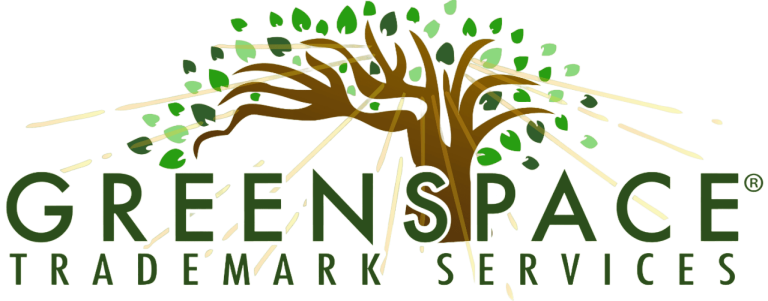A trademark is a symbol, word, or combination of both that identifies and distinguishes the goods or services of one business from those of others. Think of a brand’s logo or a specific tagline. The primary purpose of trademarks is to protect consumers from confusion and help businesses establish a unique identity in the market.
In Canada, trademarks are governed by the Trademarks Act, which provides the legal framework for their registration, use, and enforcement. Knowing the basics of trademark law is important for anyone who owns a business, as it ensures that your brand is protected against unauthorized use by others. Understanding trademarks isn’t just about legal protection; it’s about securing your brand’s reputation and value. By learning how trademarks work and their significance, you can better safeguard your business’s identity and make informed decisions to grow your brand effectively.
Basics of Trademarks
Trademarks come in different forms, including word marks, design marks, and combined marks. A word mark could be as simple as the brand name “Nike,” whereas a design mark involves logos or symbols like the iconic Nike swoosh. Combined marks include text and images, such as the Nike swoosh with the company’s name.
So, what can be trademarked? Any unique symbol, word, logo, or combination that distinctly represents a product or service can be trademarked. This extends to slogans, brand names, and even distinct product packaging. For example, Coca-Cola’s distinctive bottle shape is trademarked.
In Canada, a registered trademark grants protection for up to 15 years and can be renewed indefinitely. This long duration ensures that your brand remains protected as long as you renew the trademark.
Now, let’s talk about the process of registering a trademark in Canada. The first step is to conduct a search to make sure your desired mark isn’t already taken. You can do this through the Canadian Intellectual Property Office (CIPO). Once you know your mark is unique, you can file an application with CIPO. Your application will then be examined to ensure it complies with all requirements. If it passes, it will be published in the Trademarks Journal. Provided there are no objections, your trademark will be registered, granting you exclusive rights to use that mark in Canada.
Understanding these basics can help you navigate the trademark registration process more efficiently. Trademarks safeguard your brand and add significant value by setting your products or services apart from competitors. They help you establish a unique identity in the marketplace, making it easier for customers to recognize and trust your brand.
Legal Protection and Enforcement
Once you register a trademark, you gain exclusive rights to use that mark across Canada. This means you can prevent others from using a mark that is confusingly similar to yours. These rights are important in maintaining your brand’s integrity and ensuring that your customers can identify your products or services without confusion.
Enforcing your trademark rights involves several steps. If you discover someone is using a mark similar to yours, you can start by sending a cease-and-desist letter. This letter formally requests the infringer to stop using the mark. If this doesn’t resolve the issue, you may need to take legal action, including filing a trademark infringement lawsuit.
Common forms of trademark infringement include unauthorized use of a similar logo, name, or packaging that could mislead consumers about the source of the goods or services. For instance, if a new beverage company started using a logo and bottle shape similar to Coca-Cola’s, it could be seen as attempting to confuse consumers into thinking they are buying a Coca-Cola product when they are not.
The Canadian Intellectual Property Office (CIPO) plays a significant role in this process. Not only does CIPO handle the registration of trademarks, but it also maintains a public database of all registered trademarks. This makes it easier to check for existing marks and helps in the enforcement process. If your issue escalates to a legal dispute, CIPO’s records can serve as key evidence to support your case.
Understanding your rights and how to enforce them is essential for protecting your brand. By actively monitoring and defending your trademark, you help maintain your business’s distinctiveness and reputation in the marketplace. Remember, a well-protected trademark can deter potential infringers and preserve your customers’ trust and loyalty.
Benefits and Practical Considerations
Trademarks provide several advantages that can significantly enhance your business. One of the most immediate benefits is brand recognition. When customers recognize your trademark, it builds trust and loyalty. For example, when people see the Apple logo, they associate it with high-quality technology products. This recognition can make your marketing efforts more effective because a well-known trademark often needs less advertisement to achieve the same level of consumer engagement.
From an economic perspective, trademarks can add substantial value to your business. A strong trademark can make your business more attractive to investors and potential buyers. It also opens up new revenue streams through licensing. For instance, Disney licenses its characters to various merchandise producers, creating additional income beyond movies and theme parks.
It’s essential to consider the costs and practical elements of maintaining a trademark. Registration fees, renewal costs, and potential legal expenses for enforcement are some of the financial aspects to account for. While it might seem costly upfront, the long-term protection and brand security often justify these expenses. Also, having a trademark can save you significant costs by preventing potential legal battles with infringers.
If your business operates internationally or plans to expand abroad, consider international trademark protection. Each country has its own trademark laws, so having a registered trademark in Canada doesn’t protect you in other countries. Tools like the Madrid Protocol simplify international registration, allowing you to seek protection in multiple countries through a single application.
Wrapping Up: The Role of Trademarks in Business Strategy
In summary, trademarks are vital to any business strategy. They protect your brand, ensure your products or services stand out, and build consumer trust. By having a registered trademark, you gain exclusive rights that prevent others from using marks that could confuse your customers.
The key benefits of trademarks include brand recognition, economic advantages, and heightened consumer trust. Additionally, considering both national and international protection can secure your business’s future growth and market presence.
If you’re a business owner, understanding trademarks and considering registration can be one of your most important steps. Protecting your brand safeguards your reputation and positions your business for long-term success. As you move forward, remember the vital role trademarks play and how a competent trademark agent in Canada can ensure your security, build trust, and add value to your business strategy.




